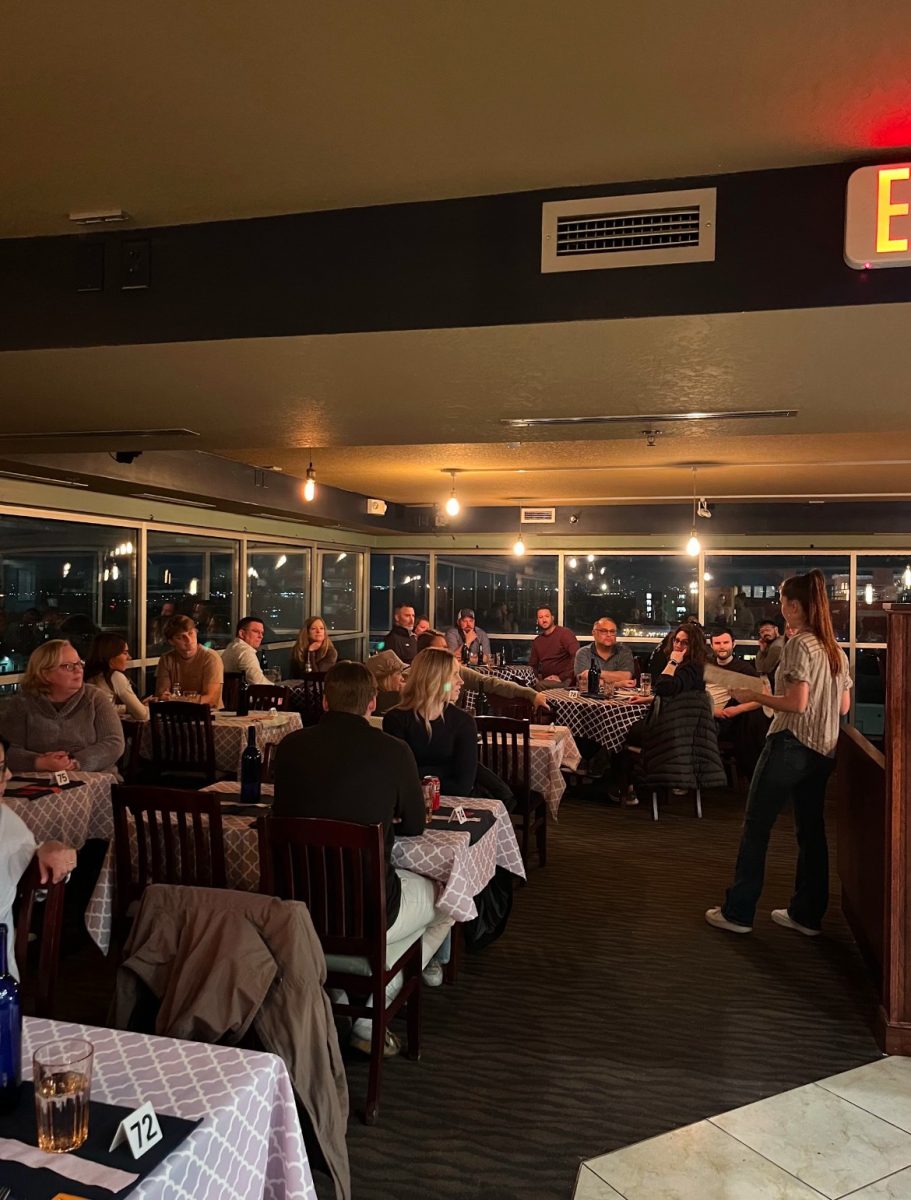One block at a time: Building interest in engineering
July 25, 2005
A lab on the second floor of Howe Hall resembles a restricted place. A sign on the locked door reads “This is not a public lab,” and the identical computers stare back at the casual visitor walking by. But inside waits another world that includes Lego versions of everything from cars to Cy and the Campanile and even a racetrack. All have been assembled in Iowa State’s Lego lab.
Researchers at Iowa State are using these souped-up versions of the popular childhood toys to introduce younger students to science and math and educate a new generation of hands-on engineers. A proposed grant to the National Science Foundation would help fund the lab’s work for five or 10 years.
Larry Genalo, professor in materials science and engineering, has worked with the Toying With Technology lab since receiving its initial start-up grant of $20,000 in 1996.
“One of the ways we sold the course originally was the ability to model real world devices,” Genalo said. “We’ve made Lego elevators which stopped on floors and beeped different tones on different floors or when the doors opened and closed.”
Other applications of the technology include driving cars with TV remote controls and coordinating a square dance among cars. The infrared technology in the assembled kits allows each Lego car to communicate its position to the others, and programming from students enables the cars to back up, turn or go forward.
A recent grant application to the National Science Foundation collaborates with three other engineering schools and the American Society for Engineering Education. Iowa State is collaborating with engineering departments at Michigan Tech University, Worcester Polytechnic Institute and North Carolina State University.
Iowa State’s local partners are the Science Center of Iowa and the Des Moines Public School District. Genalo said university outreach activities through the Toying With Technology lab reach thousands of students each year.
Eric Iversen, manager for outreach for the American Society for Engineering Education, said the grant would investigate the effect engineering outreach activities like the ones provided in the Lego lab on test scores in math and science.
“The proposal is trying to meet a need of great interest in the educational field in what constitutes real math learning,” Iversen said. “[There’s not a lot of data] to measure if it’s better to tell kids that two plus two equals four or say that Johnny and Suzie each have two blocks, and that makes four.”
Iversen said one goal of the society is to increase the number of students graduating in engineering fields, as the United States graduates a lesser percentage of its students with engineering degrees than other countries. If the grant is awarded, Iowa State also plans to monitor whether the programs have any effect on the number of college-bound students choosing to major in engineering.
Iversen said each school the society is collaborating with had strengths that would help performance as part of the grant.
“All of those schools have particularly good programs in education and engineering, different relations with local K-12 systems and collaborations in training teachers in engineering activities,” Iversen said.
Genalo said it may be approximately six months until he finds out if the grant is funded.
Engineering students at Iowa State also benefit from the Lego lab because of the nature of engineering problems as involving both programming and instrument design.
“We use the Lego kits in our introductory Engineering 160H [honors]class,” said Genalo.
“A real-world engineer looks at a systems approach — when something goes wrong, was it the programming, the batteries or some other system?”
Keegan Gartner, sophomore in mechanical engineering, took Engineering 160H last fall.
“Legos were more hands on and more real-world than the rest of the class,” Gartner said.
“I enjoyed it, since it…sped up the last part of Engineering 160H.”






